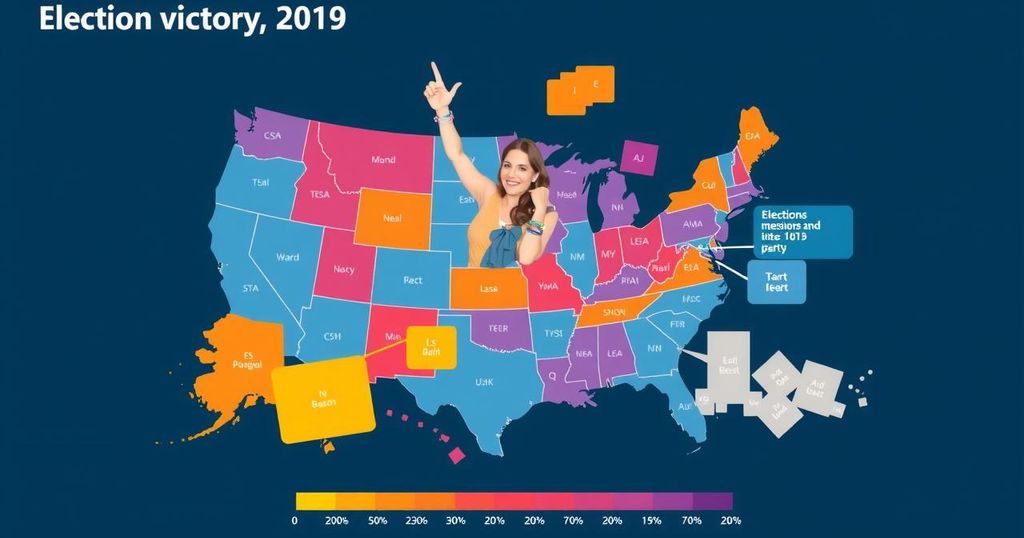Analyzing Kamala Harris’s Campaign Challenges and Trump’s Unexpected Gains

The recent election underscored the significance of Biden’s low approval ratings and economic challenges for Kamala Harris, contributing to Trump’s victories across diverse demographics. Notably, Trump improved among Latino and younger voters while flipping suburban regions previously won by Democrats. Despite these gains, the narrowly contested outcomes suggest that overconfidence among Republicans is unwarranted, emphasizing the continuously shifting electoral landscape.
Following President Joe Biden’s administration, Vice President Kamala Harris faced significant challenges in the recent election. Biden’s approval rating was critically low at 39%, significantly impacting her campaign. Furthermore, consumer sentiment lagged behind, reflecting a turbulent economic landscape bolstered by 40-year high inflation, contributing to Harris’s struggles in appealing to voters. Historical precedents indicated that incumbents with low approval ratings typically suffer electoral defeat. Despite marginal improvements in some demographics, particularly with educated white women and Black women, Harris could not overcome the substantial voter shifts towards Trump across numerous groups. Notably, Trump witnessed a dramatic increase in support among Latino men, transitioning from a 23-point deficit to a 12-point lead. This unprecedented shift signifies a significant transformation in voter demographics that has not been seen in decades. Moreover, Trump demonstrated remarkable gains in suburban regions, outpacing Biden’s previous hold. Initially winning the suburbs by a mere two points in 2020, Trump flipped that dynamic, winning by four points in the recent election, challenging previous assumptions regarding suburban voters’ priorities. Interestingly, even those who prioritize abortion rights appeared to equally split their support between Trump and Harris, indicating that pivotal issues may not always influence voting behavior as expected. However, Republicans should not celebrate excessively. The narrow competitive margins signal that this election does not necessarily indicate a lasting shift in political alignment. Historical data illustrates that the electorate’s preferences can oscillate significantly, as evidenced by five party flips of the presidency since the year 2000. Voter demands evolve, and while many may have selected Trump this time, a lack of delivery on promises could prompt a return to Democratic favor in future elections. Ultimately, the recent election underscores how volatile and dynamic voter preferences remain. Understanding this equilibrium is critical for both parties moving forward, as the political landscape continues to shift and change based on public sentiment and outcomes. The complexity of the election results stands as a caution for both parties, highlighting the necessity of addressing voter needs without disregarding the continually shifting political dynamics.
Even though Kamala Harris initially took over the reins from President Biden during the campaign leading up to the recent election, several underlying political factors significantly influenced her performance. Harris campaigned against the backdrop of a deeply unpopular administration, with Biden’s approval ratings reflecting a national sentiment that proved detrimental to her candidacy. Various indices, including consumer sentiment ratings, revealed a struggling economic atmosphere that shaped voters’ perceptions and decisions at the polls, leading to substantial challenges for Harris. Historical voting trends indicate that many incumbent presidents with approval ratings above 50% tend to win reelection, while those below typically do not. In Biden’s case, his low approval and poor consumer sentiment scores hindered his party’s prospects, setting the stage for Trump’s electoral gains across diverse demographics, including young voters and Latino communities.
The recent election highlights the crucial role of approval ratings and consumer sentiment in shaping electoral outcomes. Despite some isolated gains by Kamala Harris, Donald Trump’s significant increases in support across a variety of demographics demonstrate shifting voter motivations. The competitive nature of the election suggests that Republicans may be prudent to guard against overconfidence, as voter preferences remain fluid. As history indicates, future elections may yet reflect a mosaic of influences and trends that defy familiar patterns of electoral support.
Original Source: www.usnews.com








